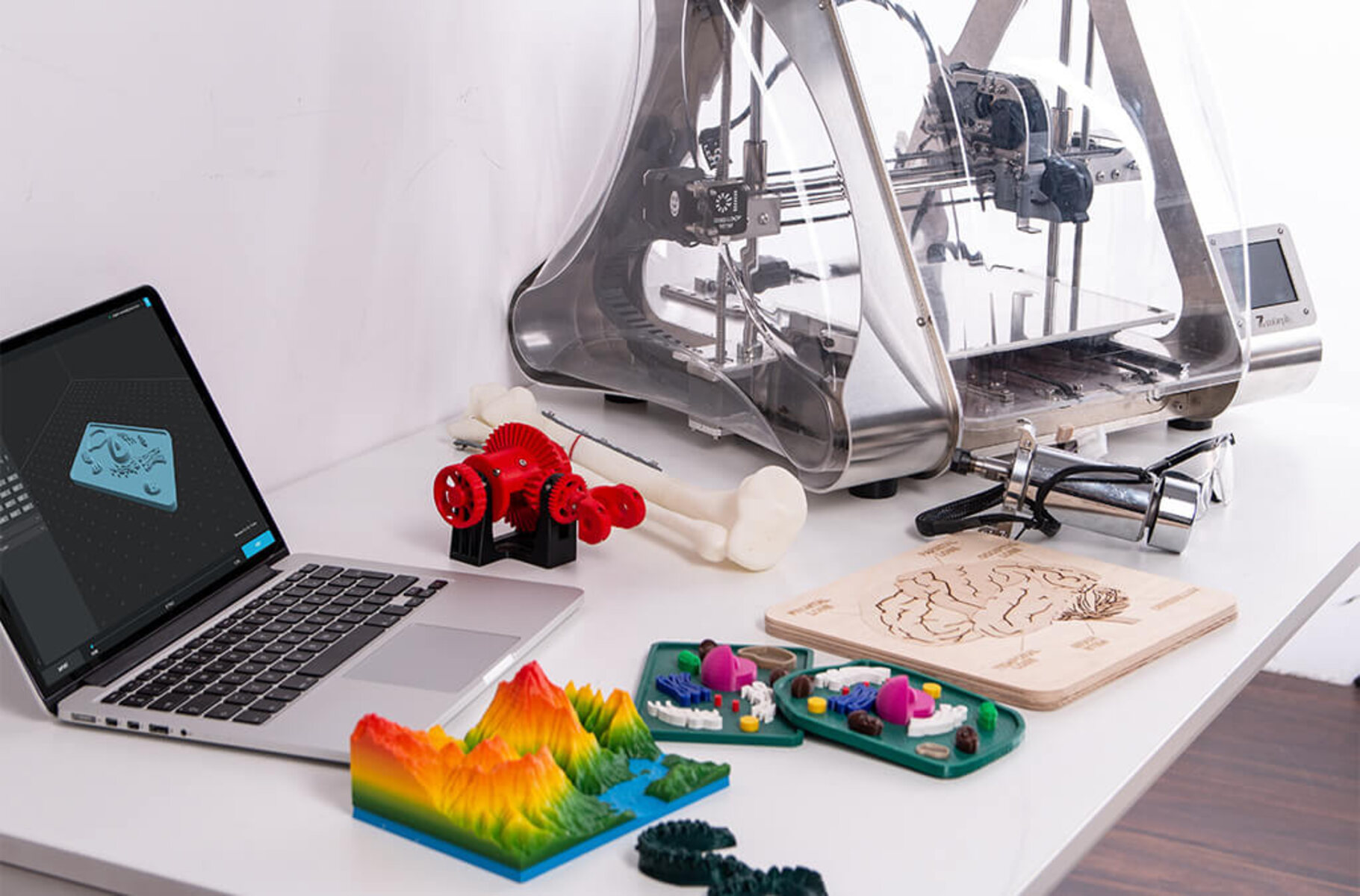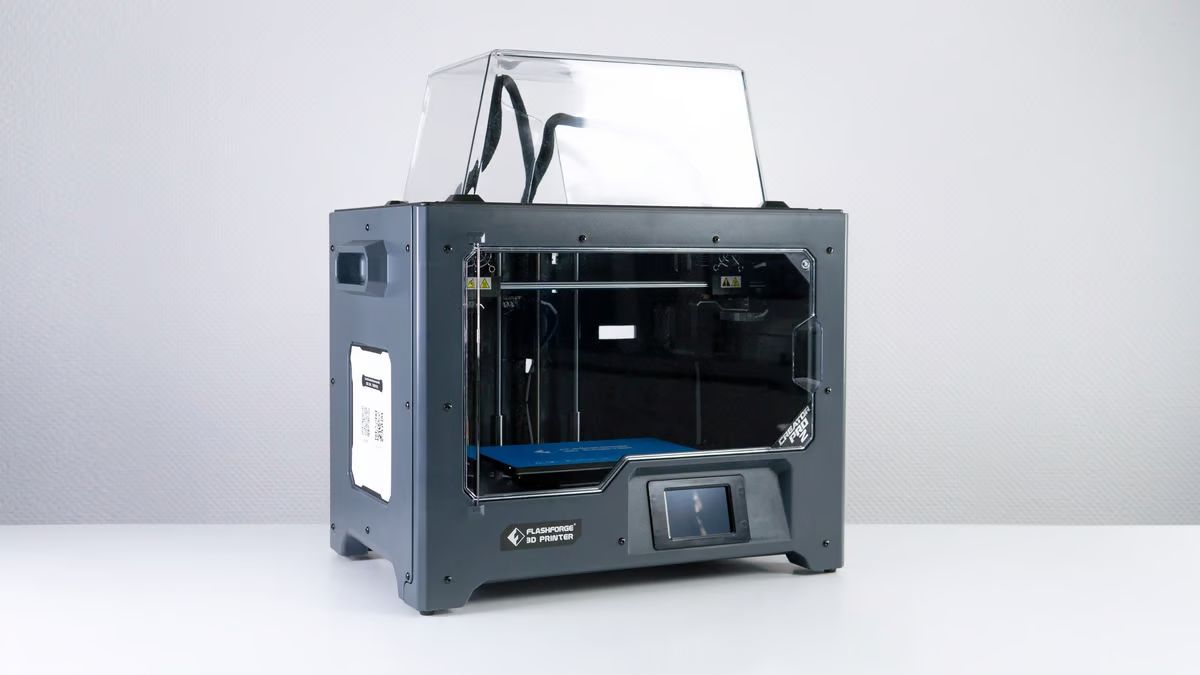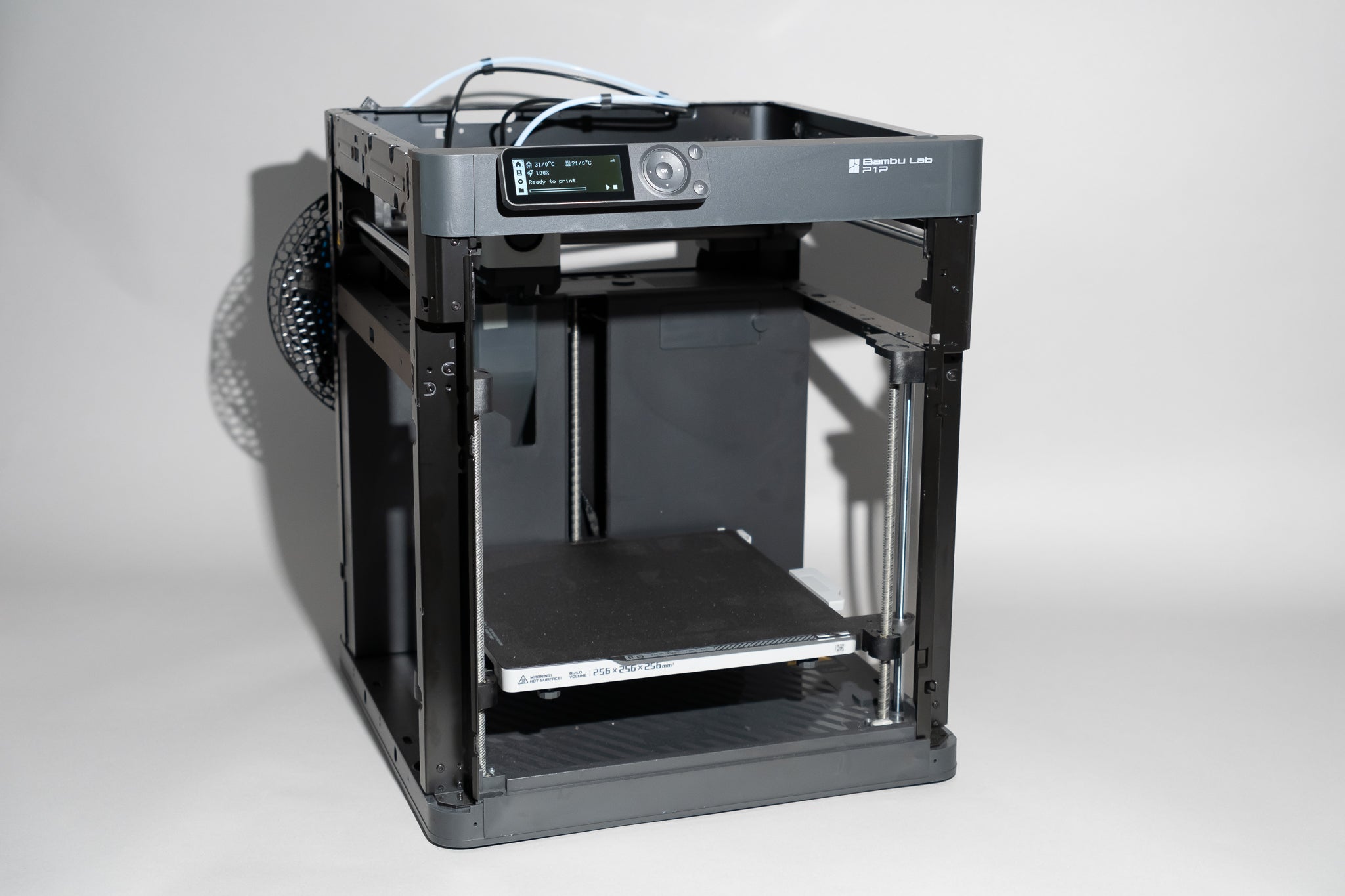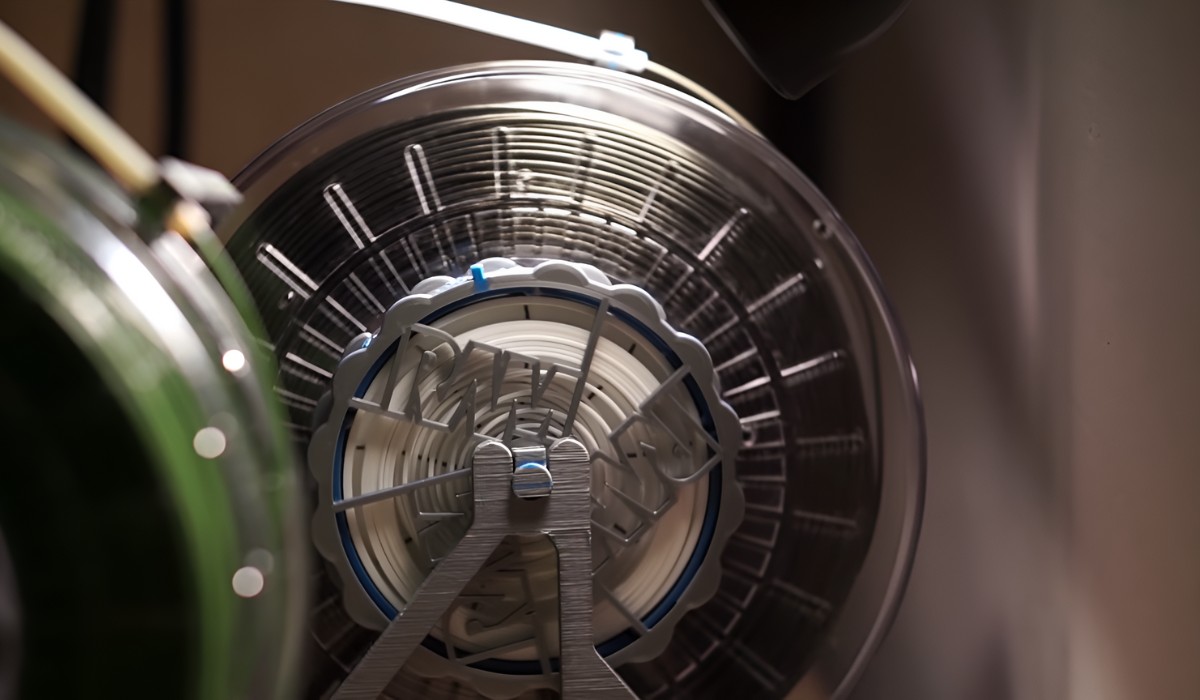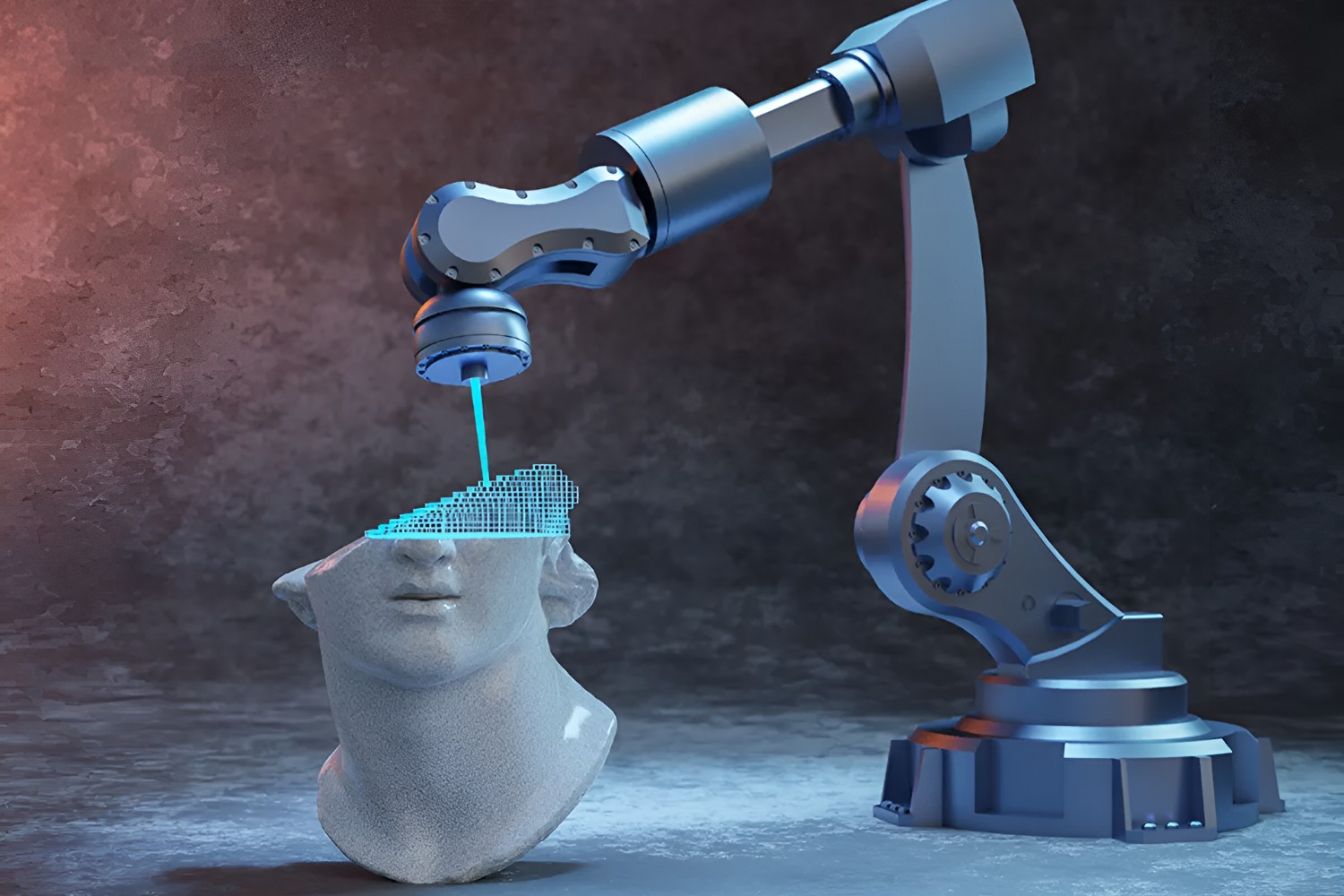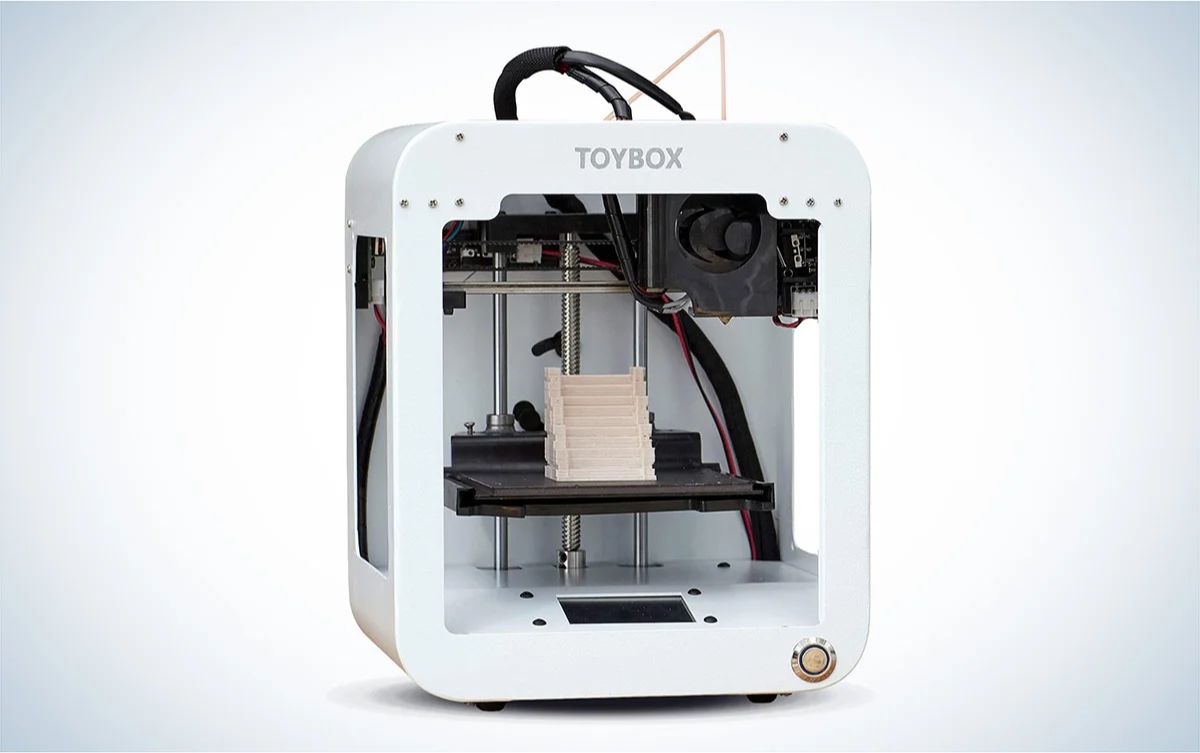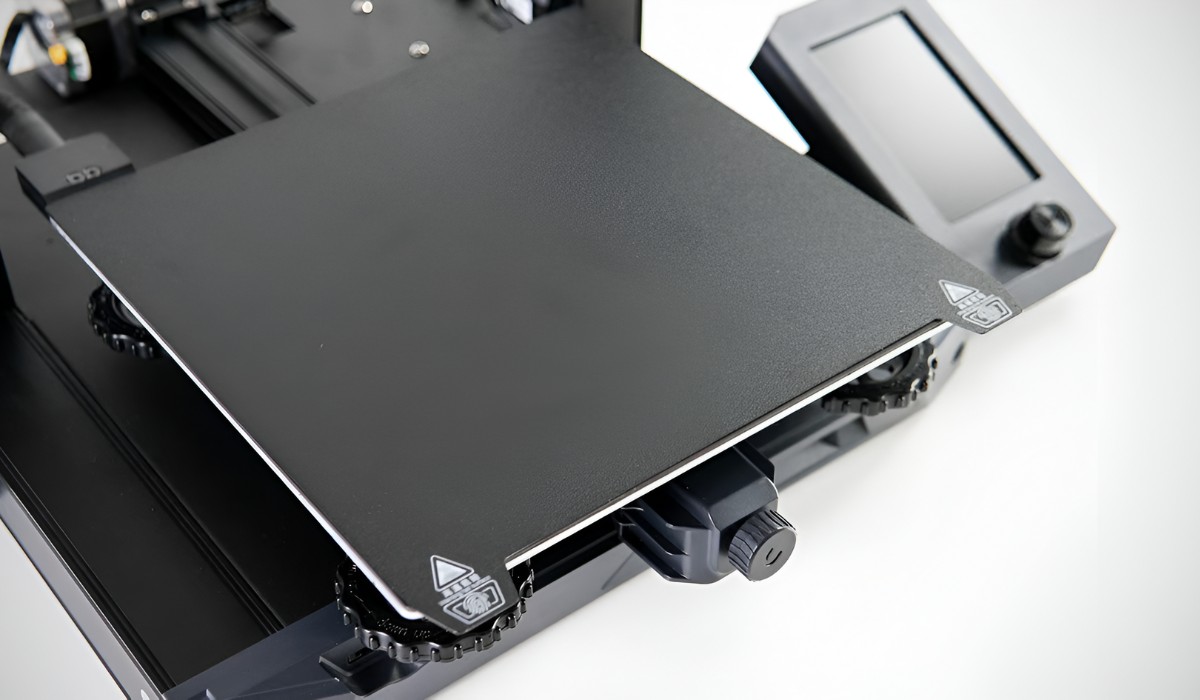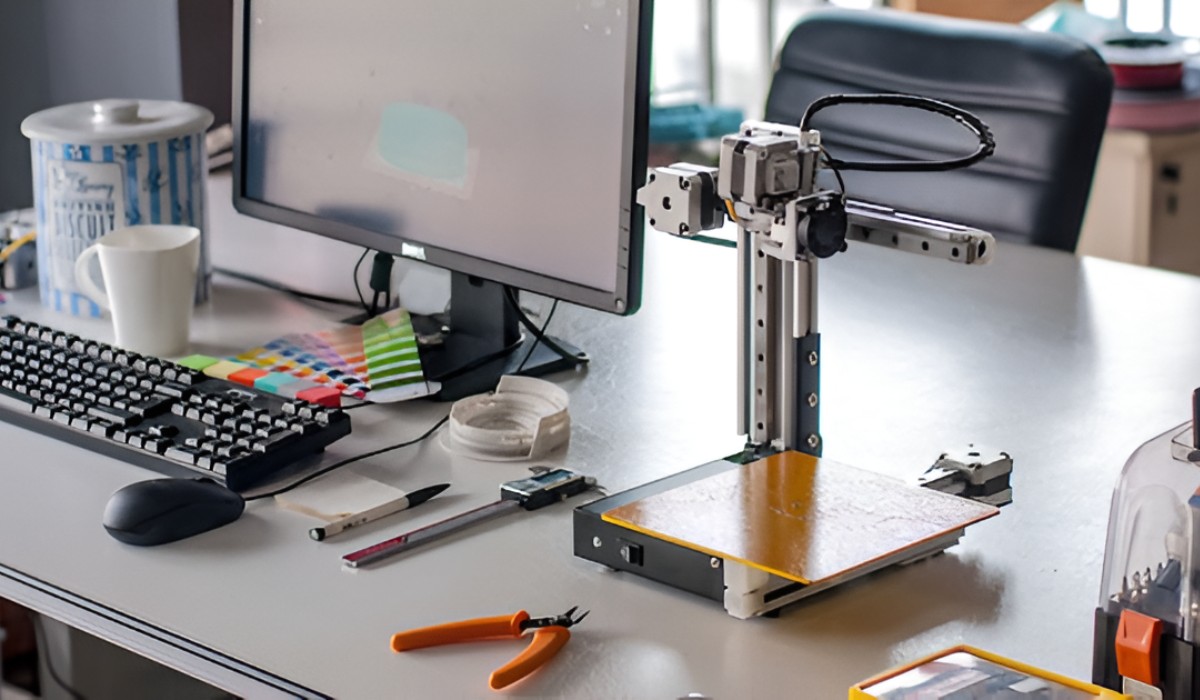Introduction
3D printing, also known as additive manufacturing, is a revolutionary technology that has transformed various industries. It allows the creation of three-dimensional objects by layering materials based on a digital design. With its increasing popularity, people are increasingly curious about what they can use a 3D printer for. In this article, we will delve into the numerous applications and possibilities of 3D printing.
3D printing has revolutionized the way we approach prototyping, manufacturing, education, art, healthcare, and more. The technology has opened up a world of possibilities, making it easier and more accessible than ever to bring ideas to life.
Whether you’re a hobbyist, engineer, artist, or educator, a 3D printer can be a valuable tool in your arsenal. It offers the flexibility to create complex designs, customize products, and rapidly iterate prototypes. Additionally, 3D printing allows for cost-effective small-scale production and enhances the speed of manufacturing processes.
The following sections will highlight some of the key areas where 3D printing has made a significant impact:
Prototyping
One of the most significant applications of 3D printing is in the field of prototyping. Traditionally, creating prototypes for new products or designs was a time-consuming and expensive process. With 3D printers, however, the prototyping phase has become faster, more cost-effective, and more efficient.
Using a 3D printer, designers and engineers can quickly turn their ideas into physical models. They can easily iterate and modify their designs until they achieve the desired outcome. This allows for rapid prototyping, which significantly reduces the time and cost involved in developing new products.
3D printing empowers innovators to test and evaluate their designs before they proceed to full-scale production. This ensures that any potential flaws or design issues are identified and addressed early in the development process, saving both time and money.
Moreover, 3D printing enables the production of highly complex prototypes that would be difficult or impossible to create using traditional manufacturing methods. With this technology, intricate geometries, moving parts, and internal structures can be easily realized, giving designers greater freedom and creativity.
Industries such as automotive, aerospace, consumer electronics, and healthcare greatly benefit from 3D printing in the prototyping phase. It allows for improved collaboration and communication between design teams and stakeholders, resulting in enhanced product development and innovation.
Overall, 3D printing has revolutionized the prototyping process, offering a faster, more cost-effective, and flexible alternative to traditional manufacturing methods. It has become an indispensable tool for designers and engineers, allowing them to refine their designs and bring their ideas to life with greater speed and precision.
Manufacturing and Production
3D printing has emerged as a game-changer in the world of manufacturing and production. It offers numerous advantages over traditional manufacturing processes, making it a preferred choice for many industries.
One of the key benefits of 3D printing in manufacturing is its ability to create highly customized and complex objects. Traditional manufacturing methods often require expensive molds or tooling for each variation. With 3D printing, products can be easily customized and adapted to meet specific requirements, without the need for extensive tooling. This flexibility enables manufacturers to offer personalized products to their customers, leading to greater customer satisfaction and loyalty.
In addition to customization, 3D printing allows for on-demand manufacturing. Traditional manufacturing often involves long lead times and high production volumes. 3D printing eliminates these constraints by enabling manufacturers to produce items as needed, reducing inventory costs and the risk of overproduction.
Furthermore, 3D printing enables the production of complex geometries and lightweight structures that are difficult or impossible to achieve with traditional manufacturing methods. This opens up new possibilities for designing innovative products with improved performance and efficiency.
Industries such as aerospace, healthcare, and automotive have embraced 3D printing in their manufacturing processes. In aerospace, for example, 3D printing is being used to create lightweight yet strong components, reducing fuel consumption and improving overall aircraft performance. In healthcare, 3D printing is revolutionizing the production of medical implants, prosthetics, and customized surgical instruments.
Overall, 3D printing is transforming the manufacturing and production landscape. Its ability to create customizable, complex, and on-demand products is revolutionizing industries, reducing costs, and enhancing product quality and innovation.
Education and Learning
3D printing has become an invaluable tool in the field of education and learning, allowing students to explore, innovate, and create like never before. It offers countless opportunities to enhance the learning experience and foster creativity across various disciplines.
With 3D printing, students can transform their ideas and concepts into tangible objects. It provides a hands-on approach to learning, allowing students to visualize and understand complex concepts by bringing them to life in a three-dimensional form. This immersive experience promotes critical thinking, problem-solving skills, and encourages a deeper understanding of abstract concepts.
In STEM (Science, Technology, Engineering, and Mathematics) education, 3D printers are used to prototype and test designs, solving real-world problems. It allows students to engage in design thinking and iterative processes, enhancing their understanding of engineering principles and practical applications.
Furthermore, 3D printing encourages interdisciplinary collaboration. Students from different fields of study, such as art, design, engineering, and biology, can come together to create innovative projects that merge their unique perspectives and skills.
From elementary schools to universities, 3D printing is revolutionizing the way students learn and educators teach. It offers a hands-on approach that fosters creativity, critical thinking, and problem-solving skills. Students can explore complex topics with tangible models and prototypes, leading to a deeper understanding and retention of knowledge.
Moreover, 3D printing provides students with practical skills that are highly valued in the workforce. It introduces them to modern manufacturing technologies and design processes, equipping them with valuable skills for future careers in engineering, architecture, product design, and more.
Overall, 3D printing has the power to transform education, providing students with a dynamic and interactive learning experience. It empowers them to think innovatively, collaborate, and apply their knowledge in real-world contexts, preparing them for the challenges of the future.
Art and Design
3D printing has revolutionized the world of art and design, offering new possibilities for creativity, expression, and experimentation. It has become an invaluable tool for artists, designers, and architects, pushing the boundaries of traditional artistic practices.
One of the key advantages of 3D printing in art and design is the ability to create intricate and complex geometries. Artists can bring their imagination to life by producing sculptures, installations, and models that were previously impossible to realize using traditional methods. 3D printing allows for the creation of highly detailed and precise designs, offering artists a new level of artistic freedom.
Furthermore, 3D printing enables the production of customized and personalized art pieces. Artists can create unique designs tailored to individual preferences, allowing for a deeper connection between the artwork and its audience.
Architects also benefit from 3D printing in their design process. With 3D printers, architectural models can be created with accuracy and detail, helping architects visualize their designs and communicate their ideas effectively to clients and stakeholders.
In addition to traditional art forms, 3D printing has expanded the possibilities for wearable art and fashion. Designers can create intricate and unique accessories, jewelry, and clothing pieces that embody their artistic vision. This intersection of technology and fashion opens up new avenues for creativity and self-expression.
Moreover, 3D printing allows for the exploration of sustainable and eco-friendly practices in art and design. Artists and designers can utilize recycled materials and develop innovative techniques to minimize waste and environmental impact.
Overall, 3D printing has transformed the art and design landscape, providing artists, designers, and architects with new tools and techniques to bring their visions to life. It offers unparalleled possibilities for creativity, customization, and innovation, pushing the boundaries of traditional artistic practices.
Medical and Healthcare
3D printing has revolutionized the field of medicine and healthcare, offering innovative solutions for patient care, surgical planning, and medical research. It has brought about significant advancements, enabling personalized and precise treatments across various medical disciplines.
One of the key applications of 3D printing in healthcare is the production of patient-specific medical devices. Surgeons can use 3D printing technology to create customized implants, prosthetics, and surgical instruments that perfectly fit a patient’s anatomy. This personalized approach improves patient outcomes, reduces surgery time, and enhances overall patient experience.
Another area where 3D printing has made a significant impact is in medical education and training. Using 3D-printed anatomical models, medical students can practice surgical procedures and develop their skills in a realistic and risk-free environment. Surgeons can also utilize 3D-printed models for preoperative planning, allowing them to improve surgical precision and optimize patient outcomes.
Additionally, 3D printing has proven to be invaluable in creating patient-specific anatomical models for diagnostics and treatment planning. Physicians can use these models to better understand complex patient conditions, improve communication with patients, and enhance the planning of delicate and intricate surgical procedures.
Moreover, 3D printing has paved the way for medical research and innovation. Scientists and researchers are utilizing 3D printing to create bioprinted tissues and organs for drug testing, regenerative medicine, and transplantation. This field, known as bioprinting, holds great potential for the development of more effective treatments and improved patient care in the future.
Furthermore, 3D printing has enabled the production of affordable and accessible medical devices in low-resource settings. This technology has the potential to bridge the healthcare gap in underserved areas by providing cost-effective and customized healthcare solutions.
Overall, 3D printing has transformed the medical and healthcare landscape, offering personalized and precise solutions for patient care, surgical planning, medical education, and research. It has the potential to revolutionize the way we approach healthcare, improving patient outcomes and driving innovation in the field.
Customization and Personalization
One of the significant benefits of 3D printing is its ability to offer unprecedented customization and personalization. The technology has revolutionized the way products are designed and manufactured, allowing for individualized and unique creations.
With 3D printing, products can be easily customized to suit individual preferences and needs. Whether it’s personalized accessories, custom-fit shoes, or tailored jewelry, 3D printing enables the creation of one-of-a-kind items that reflect the personality and style of the user.
Moreover, 3D printing allows for the adaptation of products to specific requirements. For example, in the healthcare industry, 3D printers can produce custom-fit prosthetics, orthotics, and assistive devices for individuals with unique physical needs. This level of customization improves the comfort and functionality of these devices, positively impacting the quality of life for patients.
Additionally, 3D printing has the potential to disrupt the traditional manufacturing supply chain. Instead of mass-producing standardized products, companies can embrace 3D printing to offer tailored, made-to-order items. This reduces waste, inventory costs, and the environmental impact associated with mass production.
Furthermore, 3D printing allows for rapid iteration and design modifications. Instead of waiting for new molds or tooling, designers can quickly update and improve their products by making changes to the digital model. This level of flexibility and agility enables companies to respond to customer feedback and preferences in real-time.
Industries such as fashion, jewelry, consumer goods, and automotive have embraced the customization potential of 3D printing. This technology empowers designers and consumers to co-create unique, personalized products that stand out from the crowd.
Overall, 3D printing offers a new era of customization and personalization in manufacturing. It enables the creation of individualized, tailor-made products that align with the preferences and needs of consumers. This transformative technology is redefining the concept of mass production and empowering both designers and consumers to embrace their creativity and uniqueness.
Home and DIY Projects
3D printing has become a valuable tool for home and do-it-yourself (DIY) enthusiasts, offering endless possibilities for creative projects and customization. It empowers individuals to bring their ideas to life, whether it’s for home decor, functional objects, or practical solutions.
One of the key advantages of 3D printing in home and DIY projects is the ability to create unique and personalized items. DIY enthusiasts can design and print decorative objects, such as vases, lampshades, or figurines, to add a touch of individuality to their living spaces. Additionally, personalized items for everyday use, like keychains, phone cases, or pen holders, can be easily created using a 3D printer.
Furthermore, 3D printing allows for the production of functional objects that can improve daily life. Need a custom storage solution, a smartphone stand, or a unique kitchen gadget? With a 3D printer, these items can be easily designed and printed at home, providing practical solutions tailored to specific needs.
In addition to customization, 3D printing enables DIY enthusiasts to repair and replace parts for household items. Broken or missing components can be easily recreated using a 3D printer, saving both time and money. This opens up opportunities for individuals to extend the lifespan of their belongings and reduce waste.
Moreover, 3D printing brings DIY projects within reach for those who may not have extensive traditional crafting skills. With the right software and materials, anyone can design and print their own creations, unleashing their creativity without the need for specialized tools or technical knowledge.
From home improvement to hobbyist projects, 3D printing offers a new level of creativity and personalization. DIY enthusiasts can explore their ideas, experiment with design, and bring practical solutions to life in a cost-effective and accessible way.
Overall, 3D printing opens up a world of possibilities for home and DIY projects. It allows individuals to unleash their creativity, personalize their living spaces, and find practical solutions to everyday challenges. With a 3D printer, the only limit is the imagination.
Engineering and Architecture
3D printing has had a profound impact on the fields of engineering and architecture, revolutionizing the way professionals approach design, prototyping, and construction. This technology has opened up new possibilities for innovation, precision, and sustainable practices in these industries.
One of the key benefits of 3D printing in engineering and architecture is the ability to create highly complex and intricate structures. Architects can use 3D printers to produce realistic scale models of their designs, allowing them to visualize and communicate their ideas effectively. Engineers can also create prototypes of mechanical components or architectural elements to ensure proper fit and functionality.
Furthermore, 3D printing enables the production of custom and specialized parts in the engineering and architectural fields. Complex geometries can be easily manufactured, helping to optimize structural performance and material usage. This level of customization allows for more efficient and sustainable designs that meet specific project requirements.
In architecture, 3D printing has the potential to revolutionize the construction industry. Large-scale 3D printers can be used to create entire buildings or individual components, saving time and labor costs. Additionally, 3D printing allows for the use of sustainable construction materials, such as recycled plastic or concrete, reducing waste and environmental impact.
Moreover, 3D printing facilitates the exploration of innovative design concepts and the rapid prototyping of architectural ideas. Architects can test different iterations of their designs quickly, enabling them to refine and improve their concepts efficiently. This iterative process leads to more innovative and optimized designs.
In the engineering field, 3D printing is used to create functional prototypes, test models, and intricate parts with high precision. This technology accelerates the product development process, allowing engineers to identify and resolve design flaws early on, reducing time-to-market and costs.
Overall, 3D printing has transformed the fields of engineering and architecture, offering innovative solutions, customizability, and sustainable practices. This technology enables professionals to push the boundaries of design, create intricate structures, and streamline the construction and manufacturing process.
Hobby and Recreation
3D printing has become a popular tool for hobbyists and enthusiasts, offering a wide range of opportunities for creative expression, customization, and innovation. Whether you are interested in model-making, gaming, or DIY projects, 3D printing opens up a world of possibilities for hobby and recreational pursuits.
One of the key benefits of 3D printing in hobbies and recreation is the ability to create unique and customized objects. From figurines and miniatures for tabletop gaming to custom-designed accessories for cosplay, 3D printing allows enthusiasts to bring their favorite characters and designs to life with exceptional detail and personalization.
Furthermore, 3D printing enables hobbyists to prototype and experiment with their own designs. Whether it’s tinkering with robotics, creating functional gadgets, or building models of architectural wonders, 3D printing provides the ability to quickly iterate and refine designs, unleashing the creative potential of hobbyists.
In addition to customization, 3D printing offers the opportunity to recreate rare or discontinued parts for vintage hobbies. Hobbyists can easily reproduce missing components for old toys, models, or collectibles, bringing new life to cherished items and preserving their value.
Moreover, 3D printing provides a cost-effective way to customize and enhance existing equipment or accessories. Whether it’s modifying camera mounts, creating unique guitar picks, or designing ergonomic gaming accessories, 3D printing enables hobbyists to tailor their gear to their specific needs and preferences.
3D printing also offers a platform for hobbyists to connect and collaborate with others in the maker community. Online platforms and forums allow enthusiasts to share their designs, tips, and experiences, fostering a community of creativity and knowledge exchange.
Whether you are into model-making, gaming, DIY projects, or any other hobby, 3D printing offers a transformative and engaging experience. It fuels imagination, encourages innovation, and allows for personalized creations, making hobbies and recreational activities even more enjoyable and fulfilling.
Conclusion
3D printing has undoubtedly revolutionized various industries and transformed the way we approach manufacturing, design, and creativity. From prototyping and production to education and healthcare, 3D printing has opened up new possibilities and unleashed a wave of innovation.
In prototyping and manufacturing, 3D printing has significantly reduced costs and lead times, allowing for rapid iteration and customization. It has empowered designers and engineers to bring their ideas to life with precision and efficiency, resulting in improved product development and increased customer satisfaction.
In education and learning, 3D printing has enhanced the learning experience and fostered creativity among students. It offers a hands-on approach that brings abstract concepts to life and equips students with valuable skills for the future. 3D printing has also enabled breakthroughs in medical research, personalized healthcare, and surgical planning, improving patient outcomes and transforming the field of healthcare.
In art and design, 3D printing has unlocked new realms of creativity and expression. Artists and designers can create intricate and personalized works that were previously unattainable with traditional methods. It has redefined the concept of mass production, allowing for greater customization and individuality.
Moreover, 3D printing has impacted hobbies, recreation, and DIY projects, offering enthusiasts the ability to unleash their creativity and personalize their pursuits. From model-making to gaming, 3D printing has brought a new level of customization and innovation, enhancing the overall hobbyist experience.
As the technology continues to advance and become more accessible, the potential applications of 3D printing are only expanding. From engineering and architecture to customization and personalization, the possibilities are endless.
In conclusion, 3D printing has transformed industries, empowered individuals, and unleashed a wave of creativity. Its impact has been felt in prototyping, manufacturing, education, healthcare, art, and leisure. With its versatility and limitless potential, 3D printing is set to reshape the future and drive further advancements in innovation and customization.







